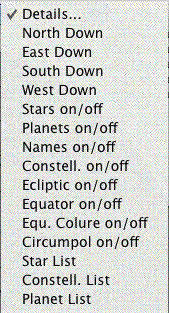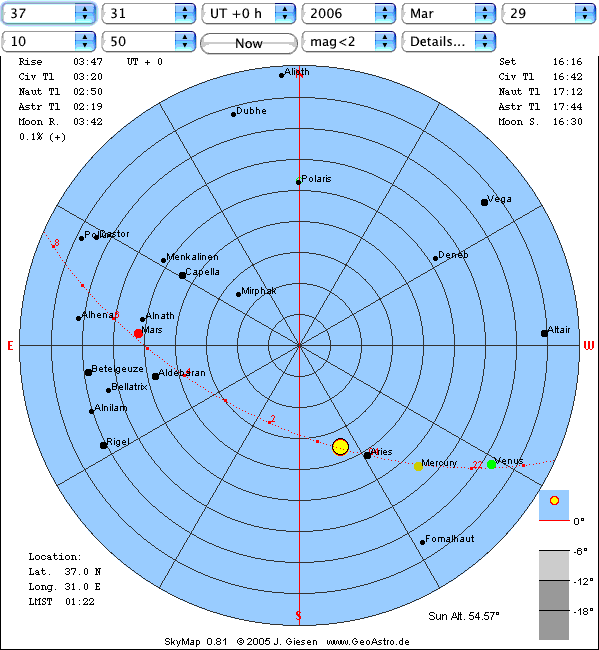|
|
GeoAstro Applets |
Astronomy |
Chaos Game |
Java |
Miscel- laneous |
Sky Map Applet
showing the bright stars and planets
(Mercury, Venus, Mars, Jupiter, Saturn)
Greatest elongations of Mercury and Venus
Applet: Planetary Motion
|
|
|
|
Enter the coordinates (decimal degrees)
for the latitude, and for the longitude, and press
"Apply input": |
|
|
|
Select the time zone. |
|
|
You may use the keys m, w, d, h, n to increase the month, week, day, hour, or minute, or shift key and m, w, d, h, n to decrease the month, week, day, hour, or minute. Use the key l or L to change the latitude Click into the applet area first ! |
|
The first items of the latitude and longitude menu are those of the applet parameter values, which may be edited by Text Edit. Using the timezone parameter value "auto",
the applet will use the system clock's time
information. Otherwise insert the time zone offset,
e.g. |
|
 |
Visual magnitude of the stars to be shown in the applet. |
 |
Equ. Colure: |
 |
The Moon, and its fraction of disc
illuminated. |
|
|
The direction of the Sun and the Moon |
 |
|
|
|
Click a star to get the name, magnitude, right ascension, and declination. |
|
|
The local mean sidereal time ("star time") at a given location is the hour angle of the vernal equinox (aries) point, or the right ascension of the transiting stars (stars on your local celestial meridian). |
  |
Examples: 1) At LMST 00:00 the aries point is on the local celestial meridian. 2) At local mean sidereal time 19:51 the star Altair (RA 19.84h) is on the local celestial meridian: |
The total solar eclipse of 2006, March 29 as seen from Turkey (Antalya, about 37° N, 31° E):

Updated: 2023, Oct 03
© 2005-2023 J. Giesen
